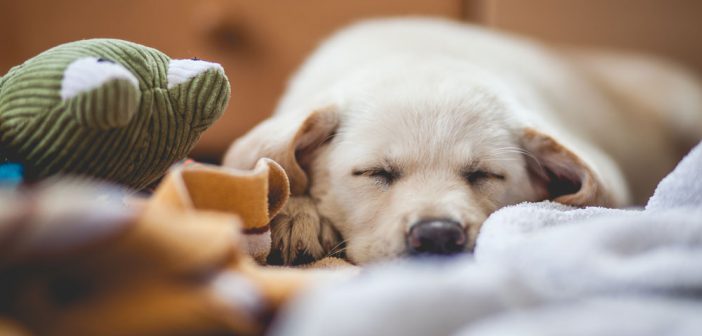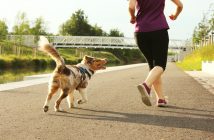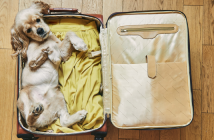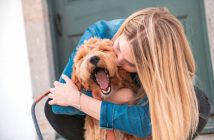One of the most exciting moments in a family is adding a furry member to the family unit. Dogs make great companions. They’re always there to love you, eager to play, and can brighten a day with a simple wag of their tail. For families who have children, dogs also play a pivotal role in teaching them about responsibility. Not to mention the kids now have someone as energetic as themselves to play with in the yard. For families who have never adopted a dog before, you likely have a few questions on how to prepare. This is an investment and a change as dramatic as adding a new baby to the family. To help make the transition between a dog-less life to a dog-full life, consider some of these tips.
1. Talk with the Kids
The first aspect that you need to cover is the kids. For families with younger children, this conversation is even more important. Smaller children don’t typically realize how fragile dogs can be. Especially in the case when you’re adopting a puppy, younger children can play a little too roughly with the puppy and end up injuring it. You should take the time to explain to them how delicate the dog is. You can brush your hand over their arm to demonstrate how lightly they can pet the dog and explain what gentle play is like.
2. Divvy Up The Responsibilities
Another aspect of preparing the kids also extends to the rest of the family. With a dog comes responsibility. Who is going to walk the dog? Who is going to clean up if the dog has any accidents? Who is in charge of giving the dog a bath or brushing their teeth? These are all duties that can be spread across the family. One of the parents will likely need to keep track of everyone to ensure no one is slacking.
3. Prepare The Accident Room
Although it’s preferable that the dog uses the bathroom outside, accidents happen. Depending on what age you’re adopting the dog at, they may be housebroken or they may need training. Even housebroken dogs may take some time to learn where it is acceptable to use the bathroom. This is because they’ve been removed from an area that they considered their territory. They’ll need to mark an area outside that will become their new territory. As for younger dogs who have yet to be potty trained, you should have an area where you can be more forgiving if accidents happen when you’re away from the house and have the dog inside the home. This area should be layered with puppy pads to help protect the floor beneath. Most importantly, you will need to instill patience within yourself. Dogs won’t learn potty training any faster if you yell at them.
4. Kennel, Open-Range, Doggy Daycare
Speaking of leaving the home, you’ll also need to decide what you’re going to do with your dog when you’re not at home. In the event that no one is home to watch the dog while everyone else is away at work or school, you need to have a plan. Many families choose to keep their dog in a kennel either inside the home or in a shaded area outside. Kennels are effective in ensuring the dog doesn’t wander around and chew up items in the home. They’re also less likely to use the bathroom in a confined space that they’re inside of.
However, not all owners like the idea of keeping their dog cooped up in a small space for several hours. Instead, you might want to choose to let your dog have free range of the home. For dogs who have been housebroken and performed well at obedience training, you likely have nothing to worry about in terms of destruction. For other dogs, you might want to take the time to put away valuables where the dog cannot reach them. Close doors to restrict their access in certain rooms.
One last option is to take them to doggy daycare. There are a few places where, for a price, they will watch your dog while you’re away from home. Each one offers different things, so make sure you research which is the best for your dog.
5. Get Doggy Equipment
Unless you want to use one of your own bowls, you’re going to need to buy a few products for your dog. The first should be a food and water bowl. There are several to choose. Some are self-feeders that fill the bowl either when the bowl is empty or at a scheduled time. Others are made of stainless steel. Yet some are simple plastic. Choose whichever fits your budget and fits your needs.
You’ll also need other necessary items like a leash, collar, and toys. The first two will likely be needed the day that you go to pick up your dog. Adoption centers typically don’t provide you with them. Toys can be picked out at any pet store. Since some pet stores allow you to bring your dog with you, why not let your dog choose for themselves what they want?
Other items to consider buying are a dog bed, treats, dog shampoo, dog toothbrush and toothpaste, and lots of dog food.
6. Toys
Speaking of toys, you actually need to put a bit of consideration into just what you need for your dog. For active dogs, you’ll want to focus on toys that let them play outside or exert energy. A rope can be a great piece for tug-of-war games. The staple tennis ball or other squeaky balls can also be great for games of fetch. For those owners who may grow tired of playing fetch, you can always buy a self-fetch machine.
Yet the other aspect of toys is puzzle games. Intelligent dogs need to be mentally stimulated. Puzzle toys are perfect for challenging them.









